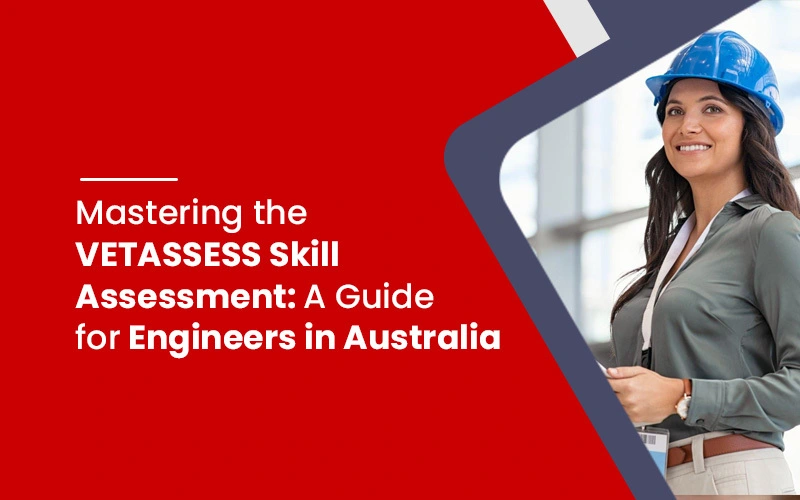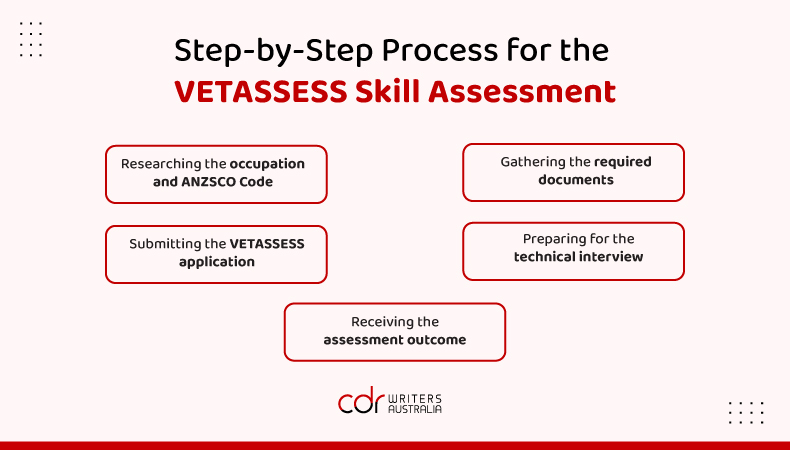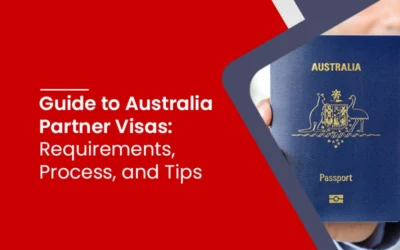Mastering the VETASSESS Skill Assessment: A Guide for Engineers in Australia

Table of Contents
- 1. Understanding the VETASSESS Skill Assessment
- 2. Step-by-Step Process for the VETASSESS Skill Assessment
- 2.1 Researching the Occupation and ANZSCO Code: A vital first step
- 2.2 Gathering the required documents: A comprehensive checklist
- 2.3 Submitting the VETASSESS application: Step-by-step instructions
- 2.4 Preparing for the technical interview: Tips and best practices
- 2.5 Receiving the assessment outcome: What to expect?
- 3. Tips for a successful VETASSESS Skill Assessment
- 3.1 Highlighting relevant qualifications and experience: Key strategies
- 3.2 Crafting accurate and detailed employment references: Dos and Don’ts
- 3.3 Demonstrating English language proficiency: Essential steps
- 3.4 Preparing for the technical interview: Strategies for Success
- 3.5 Reviewing and proofreading: Ensuring an error-free application
- 4. Commonly asked questions about the VETASSESS Skill Assessment
- 1. How long is the VETASSESS assessment valid?
- 2. Can I appeal the VETASSESS assessment outcome if it is unfavorable?
- 3. How long does the VETASSESS assessment process take?
- 4. Which Australian visas accept the VETASSESS skill assessment?
- 5. Can I reapply for the VETASSESS skill assessment if my initial application is unsuccessful?
- Conclusion
Are you an engineer planning to migrate to Australia? Understanding and completing the VETASSESS skill assessment is crucial in your journey. In this comprehensive guide, we will provide you with valuable insights and step-by-step instructions to master the VETASSESS skill assessment process. Following this simple guide enhances your chances of a successful outcome. Let’s get started!
1. Understanding the VETASSESS Skill Assessment
The VETASSESS skill assessment is a critical step for engineers migrating to Australia. It plays a significant role in determining their eligibility for skilled migration and subsequent visa applications. Let’s delve into the critical aspects of the VETASSESS skill assessment process.
1.1 What is VETASSESS, and How does it work?
VETASSESS, short for Vocational Education and Training Assessment Services, is an Australian organization authorized to assess the skills and qualifications of professionals seeking migration to Australia. It evaluates the suitability of an individual’s qualifications and work experience in alignment with Australian standards.
The VETASSESS assessment process comprehensively evaluates an engineer’s educational background, work experience, and English language proficiency. It ensures that the candidate’s skills meet the requirements of their nominated occupation in Australia.
1.2 Importance of the VETASSESS Skill Assessment for Engineers in Australia
The VETASSESS skill assessment is important for engineers planning to pursue their careers in Australia. It serves as a benchmark to ascertain their competence and helps prospective employers and immigration authorities determine their suitability for skilled migration.
Completing the VETASSESS skill assessment is a prerequisite for applying for various skilled migration visas, including Subclass 189 (Skilled Independent Visa) and Subclass 190 (Skilled Nominated Visa). With a positive VETASSESS assessment outcome, engineers may be able to pursue their migration goals.
1.3 Eligibility criteria for the VETASSESS Skill Assessment
To be eligible for the VETASSESS skill assessment, engineers must meet specific criteria set by the organization. The eligibility requirements typically include the following:
- Relevant Educational Qualifications: Applicants must possess a relevant engineering qualification from a recognized institution, such as a bachelor’s or higher degree.
- Work Experience: Engineers must have relevant and substantial work experience in their nominated occupation in Australia or overseas.
- English Language Proficiency: Adequate English language skills are essential to demonstrate the ability to communicate effectively in an Australian work environment. Meeting the minimum English language requirements set by VETASSESS is crucial.
1.4 Required documentation for the VETASSESS Assessment: Key checklist
To undergo the VETASSESS skill assessment, engineers must compile and submit comprehensive documents to support their application. Here’s a checklist of the essential documents required:
- Certified copies of educational qualifications, such as degrees, diplomas, or certificates related to engineering studies.
- Detailed employment references highlight the roles and responsibilities of previous engineering positions. These references should be on official company letterhead, signed by authorized personnel, and provide specific information about job duties, duration, and skill areas.
- Proof of English language proficiency, such as IELTS or TOEFL test results. Ensure that the test results are within the validity period.
- A completed application form, including personal details, employment history, and nominated occupation information.
- Any additional documents explicitly requested for the nominated occupation or as per the VETASSESS guidelines.
- It is crucial to review the VETASSESS website thoroughly to understand the specific document requirements for each occupation and ensure all documentation is provided accurately and as per the guidelines.
Read More: How to Write a Relationship Statement for Your Partner Visa? 💪💪
2. Step-by-Step Process for the VETASSESS Skill Assessment
To successfully navigates the VETASSESS skill assessment, following a systematic approach is crucial. This section will outline the step-by-step process to help engineers prepare and submit their VETASSESS application effectively.

2.1 Researching the Occupation and ANZSCO Code: A vital first step
Before initiating the VETASSESS skill assessment, it is essential to research and identify the specific occupation and ANZSCO (Australian and New Zealand Standard Classification of Occupations) code that aligns with your qualifications and work experience.
Researching the occupation involves understanding the job requirements, duties, and skill sets associated with your chosen profession in Australia. Determine the ANZSCO code that corresponds to your occupation, as it will be required during the application process.
2.2 Gathering the required documents: A comprehensive checklist
To proceed with the VETASSESS skill assessment, engineers must gather the necessary documents supporting their qualifications, work experience, and English language proficiency. Here’s a comprehensive checklist of the essential documents required:
- Certified copies of academic transcripts and qualifications related to engineering studies.
- Detailed employment references that outline your roles, responsibilities, and duration of employment. Ensure the references are on official company letterhead and signed by authorized personnel.
- English language proficiency test results, such as IELTS or TOEFL scores, to demonstrate your language skills.
- A completed application form providing accurate personal details, employment history, and nominated occupation information.
2.3 Submitting the VETASSESS application: Step-by-step instructions
Once you have gathered the required documents, it’s time to submit your VETASSESS application. Follow these step-by-step instructions for a smooth submission process:
- Carefully review the application form, ensuring all fields are accurately completed.
- Attach the certified copies of your academic qualifications and transcripts.
- Include detailed employment references, highlighting your roles and responsibilities.
- Provide proof of your English language proficiency, such as test results.
- Double-check all the documents and information before submission to avoid any errors.
2.4 Preparing for the technical interview: Tips and best practices
For certain occupations, VETASSESS may require applicants to undergo a technical interview. Here are some tips and best practices to help you prepare:
- Research the typical questions asked in technical interviews for your nominated occupation.
- Familiarize yourself with Australian engineering standards, practices, and regulations.
- Prepare concise and detailed responses that showcase your expertise and experience.
- Practice mock interviews to improve your confidence and communication skills.
Learn More: ACS Skills Assessment processing time. 🌟🌟
2.5 Receiving the assessment outcome: What to expect?
You will receive the assessment outcome after submitting your VETASSESS application and undergoing any required interviews. Here’s what to expect during this stage:
- Wait for the stipulated processing time, which can vary depending on the complexity of your application.
- Once the assessment is complete, you will receive an outcome letter stating whether your skills and qualifications meet the requirements for migration.
- If your assessment outcome is positive, you can proceed with your visa application or other steps in your migration journey.
- In case of a negative outcome, review the assessment feedback and consider seeking further guidance or appealing the decision if appropriate.
3. Tips for a successful VETASSESS Skill Assessment

The VETASSESS skill assessment is crucial in determining your eligibility for skilled migration to Australia. It’s essential to approach the assessment process strategically to increase your chances of a positive outcome. Here are some valuable tips to help you succeed:
3.1 Highlighting relevant qualifications and experience: Key strategies
When compiling your VETASSESS application, you must effectively emphasize your relevant qualifications and experience. Consider the following strategies:
- Tailor your application: Customize your application to align with the requirements of your nominated occupation. Highlight the qualifications and experience directly relevant to the occupation’s skill set.
- Provide supporting evidence: Include detailed documentation that supports your qualifications and experience, such as academic transcripts, certifications, and relevant training programs.
- Focus on transferable skills: Highlight transferable skills that can be applied to the Australian work environment. Emphasize how your experience can benefit the local industry.
3.2 Crafting accurate and detailed employment references: Dos and Don’ts
Accurate and detailed employment references are essential to showcase your work experience. Consider the following dos and don’ts when crafting your employment references:
Read More: Top 10 engineering fields in demand in Australia. 🧑🔬
Dos:
- Request references from supervisors or managers who can comprehensively overview your roles and responsibilities.
- Ensure references are on official company letterhead, signed by authorized personnel, and include specific details about job duties, duration of employment, and technical skills utilized.
Don’ts:
Avoid using generic or vague references that do not provide substantial information about your engineering experience.
- Refrain from using references that do not demonstrate your role or level of responsibility within the organization.
- Keywords: accurate references, detailed references, employment references, dos and don’ts, specific details.
3.3 Demonstrating English language proficiency: Essential steps
Demonstrating English language proficiency is crucial for a successful VETASSESS assessment. Follow these essential steps:
- Prepare for language tests: Familiarize yourself with the format and requirements of the English language tests accepted by VETASSESS, such as IELTS or TOEFL.
- Practice English skills: Engage in activities that improve your English language proficiency, such as reading English literature, watching English movies, or participating in language exchange programs.
- Seek professional guidance: Consider enrolling in English language courses or hiring a language tutor to enhance your language skills and ensure you meet the required proficiency levels.
3.4 Preparing for the technical interview: Strategies for Success
If your nominated occupation requires a technical interview, proper preparation is crucial. Follow these strategies for success:
- Research the interview format: Familiarize yourself with the typical format of technical interviews conducted by VETASSESS for your occupation. Understand the types of questions asked and the technical knowledge expected.
- Review Australian engineering standards: Gain knowledge of Australian engineering standards, regulations, and industry practices to demonstrate your understanding of the local context.
- Practice with sample questions: Practice answering sample technical interview questions to improve your confidence and articulate your expertise effectively.
Also Read: Recent Australian immigration trends favoring moving in 2023. 📈✈️
3.5 Reviewing and proofreading: Ensuring an error-free application
Before submitting your VETASSESS application, thorough review and proofreading are essential. Follow these steps to ensure an error-free application:
- Double-check all the information: Review your application form, supporting documents, and references to ensure accuracy and completeness.
- Proofread for grammar and spelling errors: Pay attention to grammar, punctuation, and spelling throughout your application. Consider using grammar-checking tools or seeking assistance from a proofreader.
- Seek feedback: Have someone with expertise or experience in the VETASSESS process review your application for potential errors or inconsistencies
4. Commonly asked questions about the VETASSESS Skill Assessment
The VETASSESS skill assessment process can be complex and may raise questions for engineers pursuing skilled migration to Australia. This section addresses some commonly asked questions to provide clarity and guidance.
1. How long is the VETASSESS assessment valid?
The validity of a VETASSESS assessment outcome depends on several factors. Generally, a positive assessment outcome remains valid for two years from the date of issue. However, it’s important to note that migration regulations and visa requirements are subject to change. Therefore, it is advisable to consult the latest information from the Department of Home Affairs or a registered migration agent to ensure compliance with current guidelines.
2. Can I appeal the VETASSESS assessment outcome if it is unfavorable?
If you receive an unfavorable assessment outcome from VETASSESS, you may have the option to appeal the decision. The appeal process allows you to submit additional supporting documents or challenge the assessment outcome on valid grounds. It’s essential to carefully review the feedback provided by VETASSESS and consider seeking professional advice or guidance from a registered migration agent to understand the best approach for your specific circumstances.
3. How long does the VETASSESS assessment process take?
The duration of the VETASSESS assessment process can vary depending on various factors, including the complexity of the application, the nominated occupation, and the current processing times. On average, receiving the assessment outcome may take several weeks to a few months. It’s important to note that processing times are subject to change, so it’s advisable to check the latest information on the VETASSESS website or contact their support team for the most accurate estimation.
Learn More: Common misconceptions about CDR reports for Australian Skilled Migration. 🤔🤔
4. Which Australian visas accept the VETASSESS skill assessment?
The VETASSESS skill assessment is widely recognized and accepted for various skilled migration visas in Australia. The specific visas that accept the VETASSESS assessment depend on factors such as the occupation, nominated skills list, and individual eligibility criteria.
Common visa subclasses often requiring a positive VETASSESS assessment include the Skilled Independent Visa (subclass 189) and the Skilled Nominated Visa (subclass 190). However, it’s essential to review the latest visa requirements and consult with a registered migration agent to determine the most suitable visa pathway for your situation.
5. Can I reapply for the VETASSESS skill assessment if my initial application is unsuccessful?
If your initial VETASSESS skill assessment outcome is unfavorable, you typically can reapply. It’s crucial to carefully review the feedback provided by VETASSESS, identify areas of improvement, and address any shortcomings in your subsequent application. Consider enhancing your qualifications, gaining additional work experience, or improving your English language proficiency before reapplying. Seeking guidance from a registered migration agent can increase your chances of a positive assessment outcome.
Conclusion
Good luck as you embark on your VETASSESS skill assessment journey and your future as an engineer in Australia! By following this simple guide and implementing the tips, you’re well on your way to mastering the VETASSESS skill assessment.
Remember, thorough understanding, careful preparation, and attention to detail are key to achieving a successful outcome. Stay focused, utilize available resources, and seek assistance when needed. We are a group of professionals to guide you through the ACS skill assessment, VETASSESS skill assessment, CDR report, RPL report, and other visa services.
Recent Posts
- Benefits of RPL Writing for Professional Advancement—Seize the Opportunity! July 8, 2024
- Unlocking Your Potential: Benefits of NER Registration for Engineers—Don’t miss out! July 4, 2024
- 8 Advantages of being a Registered NER Engineer April 25, 2024
- Stage 1 Competency Standard for Professional Engineer December 4, 2023
- Secure Your Future: The Most In Demand Jobs for Skilled Migrants to Australia in 2024 November 3, 2023






